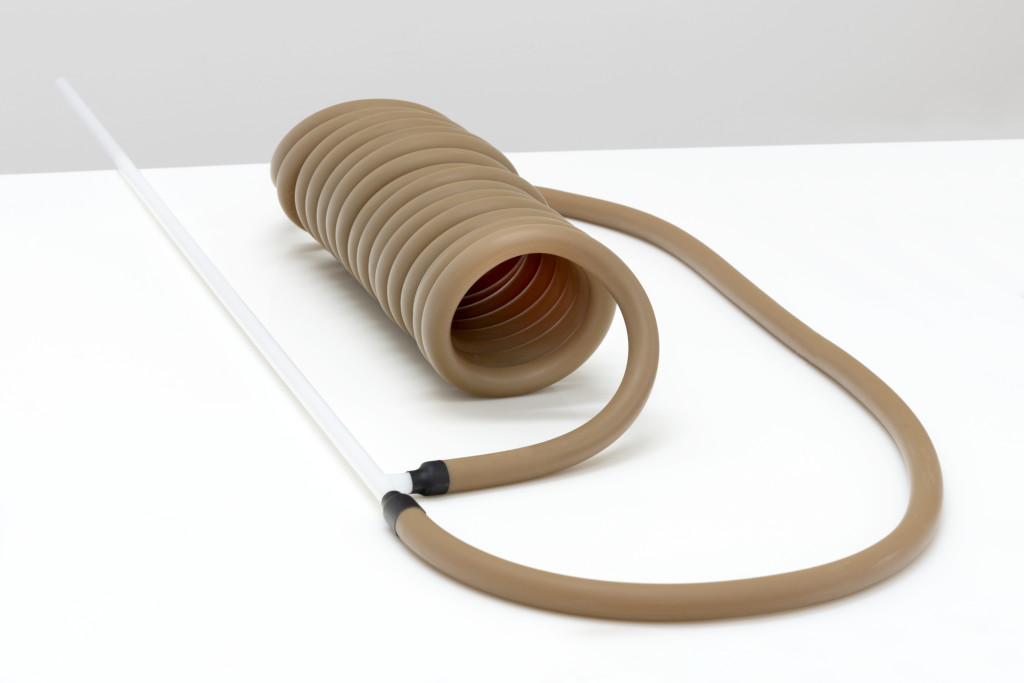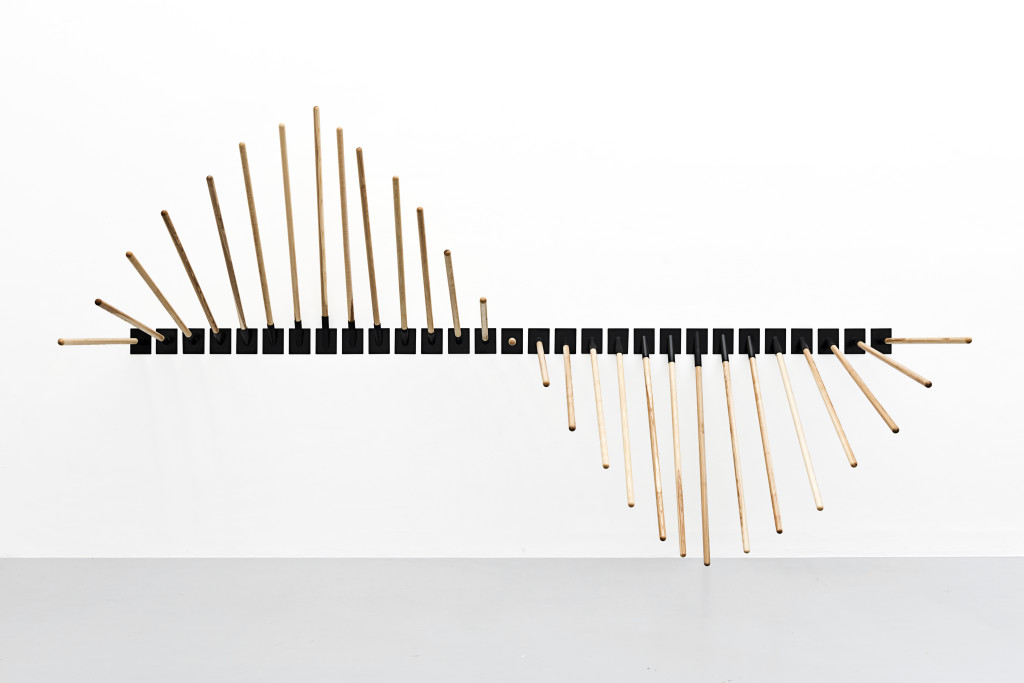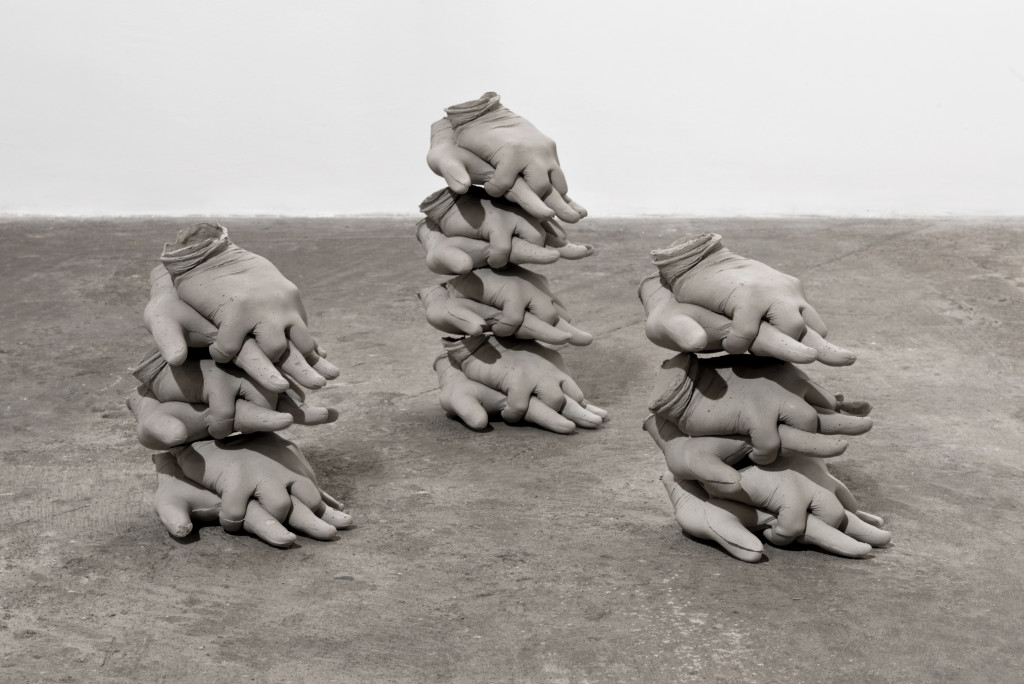Forms of Tension: Ewa Axelrad
by Alfredo Cramerotti

Ewa Axelrad’s works are connected to specific spaces, functioning as place responsive interventions. Treating the space actively, and emphasizing its context, her work refers to personal stories and collective memory. Devoid of an original context, the artworks are at once contemporary and universal; both as familiar forms and triggers for anxiety. An important aspect of Axelrad’s projects is the tension that emerges from the intersection of an aesthetically refined, perfect form of individual elements of an artwork, and the discomfort that appears when its meaning is charged with a story, or its accompanying narrative. This affect is often a result of the contrast between a clash of aesthetics and ethics, especially in relation to issues of power, control, and discipline in juxtaposition with that which is fragile and defenseless.
Alfredo Cramerotti: Let’s start with the main ideas behind your work— I realize this is a big question, and of course I have my own reading, but it may not be the same with what you think are the main guiding principles of what you do. I am interested in knowing how you yourself ‘read’ your work. Can you step outside Ewa for a moment and let me know what you see?
Ewa Axelrad: A big question indeed. The more work you do, the more difficult talking about it becomes, as there is always something different in each piece. What is easy for me though, is to zoom out and see very clearly the underlying themes and roots of my work. It sometimes amazes me what a simple sum of family history, plus surrounding that I grew up in, I am. I am totally aware that our upbringing shapes us, but I am still quite surprised how ridiculously simply my work is affected by it; family of all doctors, Holocaust ghosts, military training grounds next door, growing up in Silesia (bleak polluted heavy industry epicentre in Poland), a pinch of unpleasant personal stories…I think it all just adds up, and keeps coming out in my work as some form of tension—more or less underlying violence, the mediated body, and an interest in human nature and industrial materials.
AC: Did you get any particular source of inspiration for the visual styles of your recent series of works—e.g. Shtamah, where you tackle issues of brothers-in-arms, group mentality, the allure of nationalism, and other related concepts—or did they arrive in relation to the nature of the ‘materials’ (things, people, contexts) you have used, and locations you were in?

EA: Both, they are intertwined. The current political climate is an obvious context. The aesthetics I tend to use depends on what I want to reflect. There is a sort of ritual-like feel to Shtamah, as it includes obscure objects of worship. I looked a lot at the iconography and desires of paramilitary and far-right groups, and it manifested itself in a different aesthetics to what I employed previously. I am more into the ‘form follows function’ principle, so I try to use materials in order to bring specific connotations; for instance, I decided to use wax because it reminds me of death masks which sometimes have this skin-like quality to them, but are at the same time very morbid. But this was just one reason, the other was pragmatic; I needed a material that would allow for a finger to dig in it freely. Whereas when I made an installation of flagpoles I was using materials that they are normally made of—wood and steel. Saying that I was trying to bring a violent nature to the work by using ash, which is one of the types of wood used in production of baseball bats. The gloss of the wood is also there to subtly reference the bats. It is this subtle use of material that I am very drawn to. But coming back to aesthetics, at the moment I am working on a new project for a show in Germany in which I am using a language that does not sit that comfortably with me—formally it is quite slapdash in places, and out of context it could be considered somewhat corny, but I decided to take a risk and do it regardless. The work is in conjunction with another sculpture, which is very much about perfection. It is the tension between the two that I am drawn to, so I am trying to work with my inhibitions and push myself beyond them, but I may end up absolutely hating that part of the work.
AC: Can you dive a bit into the technical aspects of the works? Such as the gathering of raw material, software or hardware used (in the wide sense; they could be thoughts and bodies), as well as the selection and ‘editing’ process (what you take in and what is left out)? What are some of the particular challenges you and your team faced in realizing the works?
EA: I am constantly fascinated by materials and an unbelievable variety of stuff that is made and developed—I really enjoy surrounding myself with samples. I am terribly tempted to use the materials gathered, but am quite disciplined and will not use them just for the sake of it; there is far too much production—especially art production—to add more stuff without a decent reason. But when it comes to making the work, it is more often than not a bumpy ride for me. I never studied or trained in sculpture, and so I missed out on the techniques, which results in a constant learning from my own mistakes. I often do not know the limitations of mold-making, so I come up with things that tend to be particularly challenging to make. However, not thinking of what is possible and what is not is very liberating—I do not think I would want it any other way.
AC: I experienced a couple of recent installations of your work, namely the Copperfield in London and for the show I curated at HE.RO in Amsterdam. They were basically made of a series of ‘spaces’ that the viewer was moving from and to, so that visitors would walk underneath, above, into them—or beside them, or between them—but could not really see them from an ‘external’ point of view. You chose instead to have an ‘immersive’ type of installation. What was the underlying approach to this?
EA: I am glad to hear that you experienced them that way. As much as the conceptual aspect of my work is usually the starting point for me, I would not want the work to be only ‘read,’ as the visceral response is equally as important. I am very sensitive to spatial arrangements—perhaps hypersensitive and overly vigilant—and I guess it comes out in the work. Our bodies are full of receptors constantly feeding back information to our brains, whether we want to use it consciously or not as artists, it is always there, and it will always affect the experience of the work in the end.

AC: Tell me a secret about your work. Even a small one.
EA: Ha, not that it is much of a secret, but I bleed easily, most of my works end up having traces of blood from small accidents. In fact I spilled some while casting something this morning, how about that? A secret on a verge of forensics that is.
Ewa Axelrad (b. 1984, Poland) studied at Academy of Fine Arts in Poznan before moving to London to continue at the Royal College of Art. Her practice comprises predominantly of installation, photography and moving image. Among the recurring subjects in her practice, violence is explored in interpersonal and collective relations, and its manifestations in everyday objects and architectural settings. Recent exhibitions include The State is Not a Work of Art, Tallinn Art Hall, Tallinn, Ideal-Types at HE.RO Gallery in Amsterdam, Shtamah at Wrocław Contemporary Museum and Copperfield, London (2017), Axelrad lives and works in London and Gliwice.